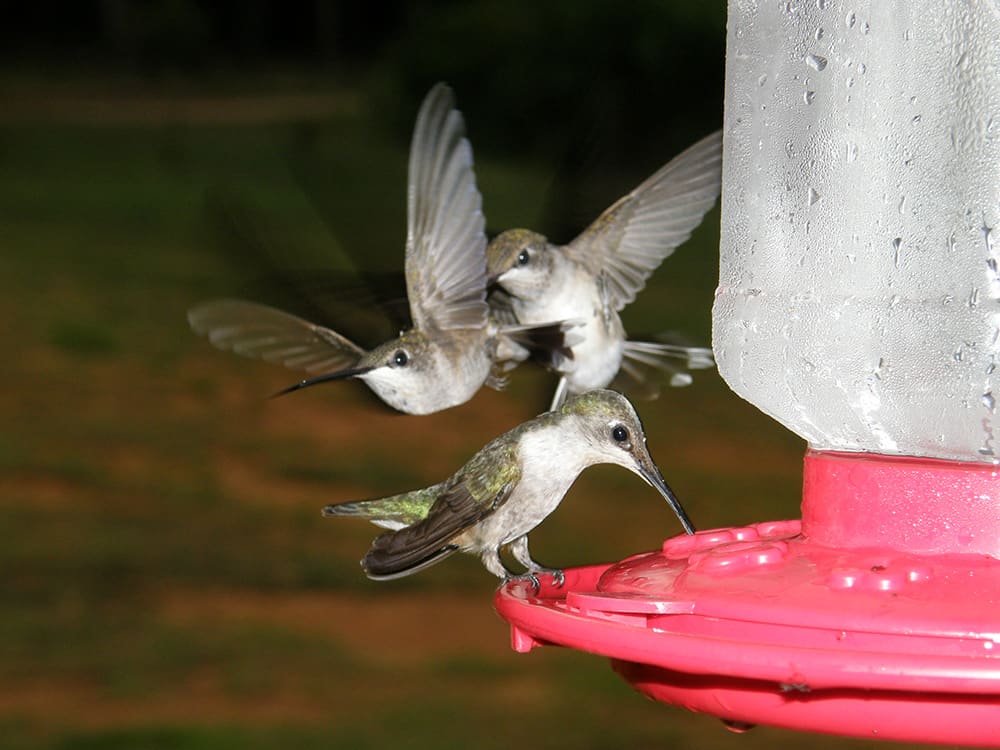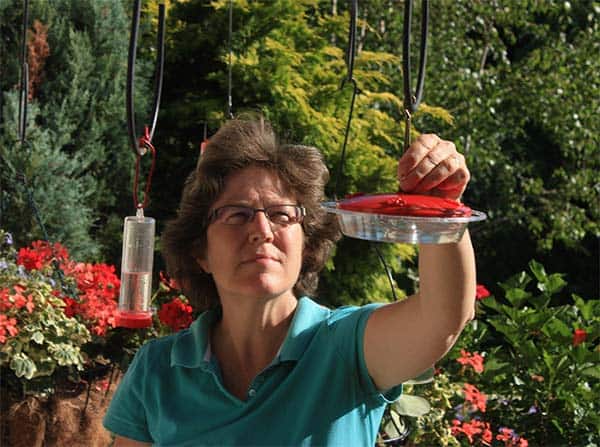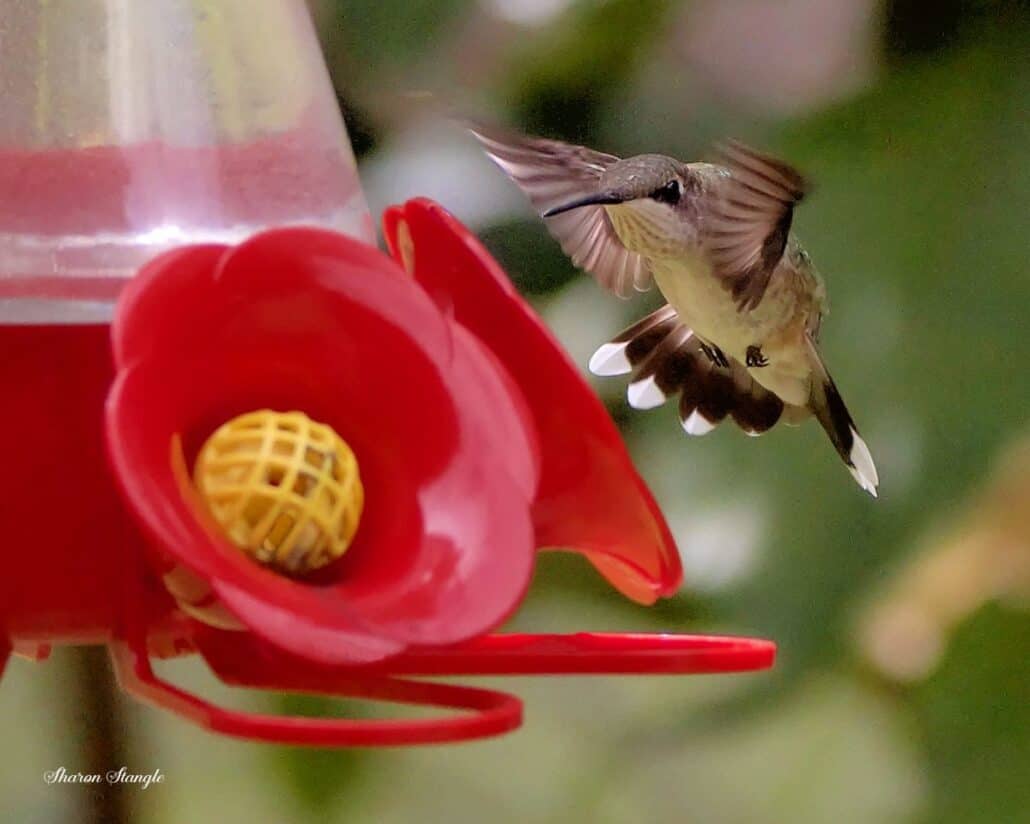Since Ms. Sherman’s time, hummingbird feeding has become a hugely popular pastime. Walk down the aisle at any store selling products for the garden and you’re sure to encounter one of more hummingbird feeders being sold.
Saucer vs. Vacuum
There are hundreds of varieties of hummingbird feeders, but all of them fall into one of two design categories: vacuum or saucer.
Vacuum feeders are basically inverted bottles with some sort of base and/or feeding port at the bottom. Nectar is held inside the feeder by the pressure vacuum created by trapped air. As a hummingbird’s bill and tongue probe the feeder port, small amounts of nectar are released, and the hummer uses its tongue to lap this up.
The advantages of vacuum feeders are that they are easy to clean and refill, and when they work properly the nectar is doled out over time. The disadvantage is their tendency to leak when the vacuum is broken due to one or more factors.
Leaking can occur when the seals around feeding ports are not snug, when low nectar levels reduce the pressure of the vacuum, when sunlight causes the feeder parts to expand, or when winds slosh the feeders about causing nectar to spill out. A leaky feeder will attract insects and other pests with which you and the hummingbirds will have to contend.
The second style of feeder is a saucer feeder. As you might guess, a saucer feeder is a bowl-like reservoir of nectar that hummingbirds access by probing downward into feeding ports. Unless disturbed by wind or marauding larger birds or mammals, a saucer feeder is unlikely to leak—a big advantage. Some designs however have the disadvantage of being difficult to clean. I know from experience that a hard-to-clean feeder gets cleaned less often, which isn’t good for the birds.
Flowers vs. Ports
The feeding ports on hummer feeders are very important to the success of your offerings. Ports that are too small will not allow nectar out and will be difficult for the birds to use, so they won’t use them. Ports that are too large will let nectar leak out and may let insects get in, which will hasten the spoiling process of the solution.
Many feeders come with plastic flowers that snap over the ports. These are meant only to help show the hummers where to probe. They do nothing toward preventing access by bees, wasps, ants, or other insects. Bee guards do a better job of this.
They, too, snap over ports and prevent insects from being able with their probing mouthparts to reach the nectar. Hummingbirds have no trouble getting past these guards, since a hummer’s tongue can extend almost twice the length of the bill to reach nectar deep inside flower or feeder.
A few final considerations when choosing a hummingbird feeder:
- Make sure your feeder suits the amount of feeding you’ll be doing. Start with a small feeder, then add others or larger-capacity models, as your number of feeder visitors grows throughout the season and years. Or, buy a large feeder, but add only a small amount of sugar-water early in the season. There’s no need to fill a feeder to the brim while demand is low.
- Check for feeders that are easy to clean thoroughly. Narrow-necked bottle feeders or saucers with small filling holes are a pain to clean. Ceramic feeders prevent you from seeing nectar levels and mold build up. The best feeders come apart for complete ease of cleaning.
- Avoid buying feeders because they are pretty. Go for function over form. Many of the best looking models being sold today are difficult to clean and may even be awkward or impossible for hummers to use.
- Perches on feeders are not necessary but may permit you to get better looks at the birds. Perches also allow larger, non-hovering birds (finches, woodpecker, orioles, etc.) to use the feeders. If this is not something you want, use feeders without perches.
- Ask your neighbors or fellow birders which feeders they prefer.
- Watch which feeders the hummingbirds prefer. You’ll soon know which ones are most popular.




